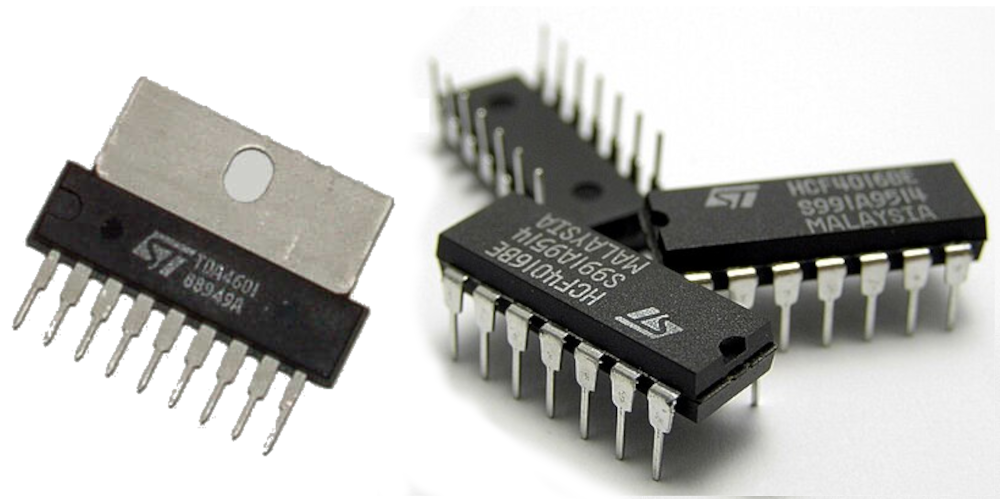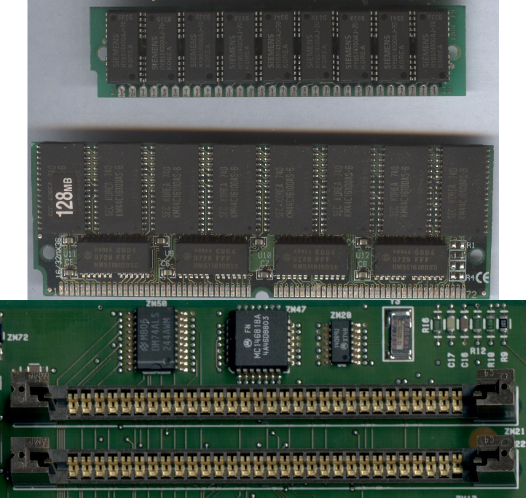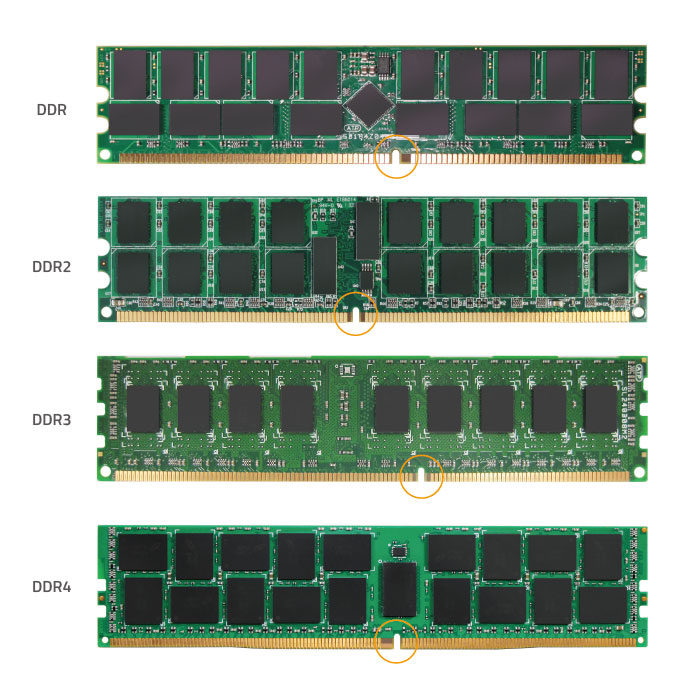¶ What is RAM?
RAM (Random Access Memory) could be seen as the short term memory of the computer. Similar to how you cram before a test and brain dump for a test, a computer uses RAMfor its short term cram memory. Every application you run, ever edit you make in a document, any process, app, and even parts of the Operating System currently running on a computer is stored in RAM. When you save and close any application, document, photo, etc. it will be stored in long term memory known as storage (Hard Drive) and wiped from the RAM. RAM loses all its data the moment power is lost, even so there is a great benefit in having and using RAM as long term storage is VERY SLOW when compared to RAM. The CPU itself would never be be able to run full throttle as it would always be waiting on data from the storage drives. DDR4 Data speeds are 25,600 MB/s while higher performance HDDs peak around 160 MB/s and High Performance SSDs peak at 14,000MB/s, but have very limited lifespans compared to RAM and are extremely expensive.
¶ The Evolution of RAM
RAM has drastically evolved over the years from SIP (Single Inline Package) and DIP (Dual Inline Package) to SIMM (Single Inline Memory Module) to DIMM (Dual Inline Memory Module). With those changes in form-factor also came changes in capacity, latency, and speed.
¶ SIP & DIP RAM
Dual Inline Package memory chips were more common in the early era of computers. SIP was also used, but DIP was basically the defacto standard in the 1970s and 1980s. Today DIP is still used for some modularity in chips, but its no longer used for RAM and had varying sizes DIP(# count of pins) which didn't exactly scale well as DIP64 chips and sockets were massive. As components got smaller and more compact, SIP and DIP didn't make as much sense. It was easier to solder more onto smaller packages with a different form-factor.

¶ SIMM & DIMM
SIMM began to gain popularity in the 1980s and held the defacto standard through the early 1990s. Thanks to the smaller and more dense packaging and denser pinout, larger RAM sizes fitting into smaller spaces with vertical mounting/seating, and easier upgrades, it was no wonder why SIMM became widely accepted.

DIMM was the successor to SIMM. State of the art in the early-mid 90s, and the new defacto standard by the late 1990s. Intel processors had began to support 64-bit bus width and to take advantage of that you were required to install dual matching 32-bit width SIMMs of similar spec to certain banks/sockets. SIMM had redundant pins on the front and back of the chip, where DIMM was different. It wasn't redundancy, but completely different pins for the chips on the back side of the RAM stick, truly “DUAL” inline memory modules on a single stick of silicon.

¶ DDR DIMMS
With the creation of DIMMs, DDR (Double Data Rate) RAM came shortly after. Basically a clock cycle can be mentally seen as a sine wave. Instead of the transfer of 1-bit of data per wave, we learned how to send 2-bits of data per wave. This drastically increased the amount of data sent per clock cycle making memory even faster. While the clock speed itself didn't change, but the amount of data moved doubled.
Over time and multiple revisions the clock speeds increased, DDR evolved, and Multi-Channel comes back from the SIMM era to be now used with DIMMS . Multi-Channeling allowed the use of 2 or 4 DIMMs, and in current dual CPU servers, up to 8 DIMMs . This effectively doubles or quadruples bus width from 64-bits (Single Channel) to 128-bits (Dual Channel), 256-bits (Quad Channel), 512-bits (Octa Channel). This drastically increased speeds in which data could be transferred by sending bits in parallel across multiple DIMMs. Just like SIMMs dual channeling required matching chips, so do DIMMs or you could end up with instability or major performance regressions.
DDR revisions also do NOT have backward compatibility and are directional. To avoid accidental seating of incorrect DDR DIMMs into the wrong generation socket or backwards, you'll notice a notch is cut into the DIMM and the socket will have a plastic knob that fits the notch for that specific generation of DDR. You should never need to force a DIMM into its respective socket. If you notice the DIMM rocks back and forth in the socket, its likely rocking on top of the knob preventing the seating of the DIMM backwards or even of the wrong generation.
